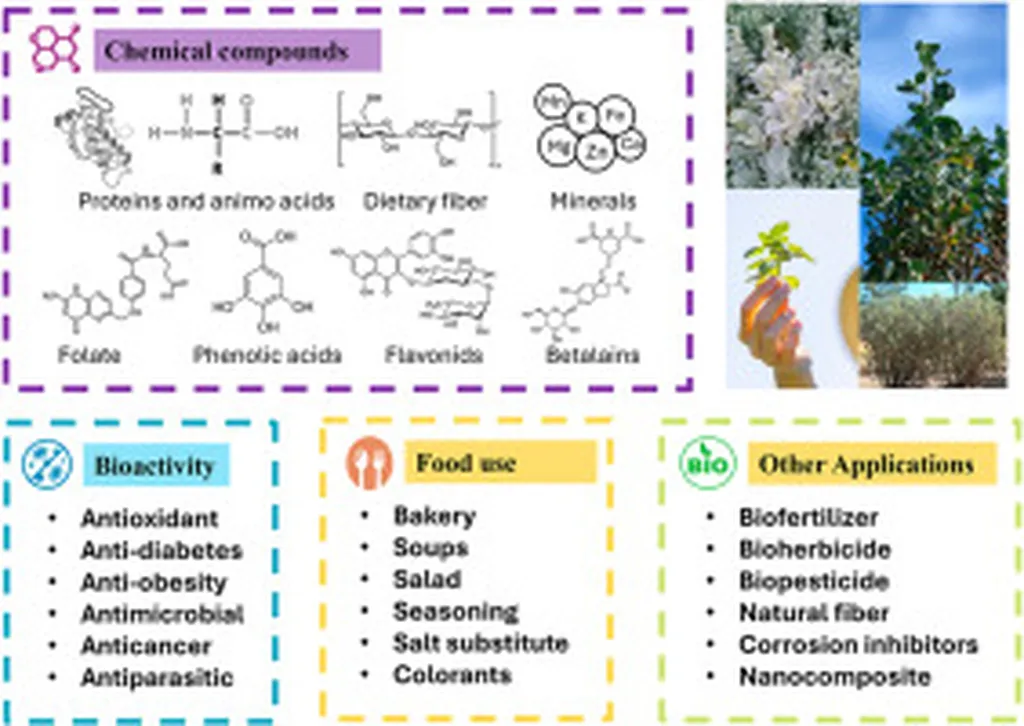In the quest for sustainable agriculture, researchers are exploring alternative feed resources that can support animal growth while minimizing environmental impact. A recent study published in *BMC Veterinary Research* sheds light on the potential of Atriplex, a hardy shrub, as a viable alternative to traditional alfalfa hay for feeding camel calves. The findings could have significant implications for the agriculture sector, particularly in arid regions where camels are a vital part of the livestock economy.
The study, led by Alaa Emara Rabee from the Animal and Poultry Nutrition Department at the Desert Research Center in Egypt, investigated the effects of replacing alfalfa hay with Atriplex nummularia hay on the rumen microbiota, fermentation processes, and growth performance of camel calves. Over a period of 120 days, twenty-four one-year-old camels were divided into three groups and fed different forage types: alfalfa hay, a mixture of alfalfa and Atriplex, or Atriplex alone.
The results revealed that the inclusion of Atriplex in the diet altered the rumen microbiota, increasing the relative abundance of certain beneficial bacteria while reducing others. “Atriplex inclusion increased the relative abundance of genera Christensenellaceae R-7 group, and Acetitomaculum,” Rabee noted. This shift in microbial composition suggests that Atriplex can influence rumen fermentation processes, which are crucial for the digestion and nutrient absorption in camels.
Interestingly, the study found that camels fed Atriplex had lower rumen ammonia and acetic acid levels, but higher propionic and butyric acids. These changes in fermentation profiles indicate that Atriplex can potentially enhance the efficiency of feed utilization. However, the growth rates of the camels were slightly lower in the Atriplex-fed groups compared to those fed alfalfa hay, suggesting a slight negative effect on animal growth.
Despite this minor setback, the findings highlight the potential of Atriplex as a partial replacement for alfalfa hay in camel diets. “Atriplex can replace alfalfa hay partially in the feeding of camel calves in the presence of concentrate feed mixture,” Rabee explained. This could be a game-changer for farmers in arid regions, where water scarcity and harsh climatic conditions make growing traditional forage crops challenging.
The commercial impacts of this research are substantial. Atriplex is a drought-resistant plant that requires minimal water and can thrive in saline soils, making it an ideal crop for sustainable agriculture. By incorporating Atriplex into camel diets, farmers can reduce their dependence on water-intensive alfalfa and improve the sustainability of their operations. Additionally, the use of Atriplex could help diversify feed resources, reducing the risk of feed shortages and price volatility.
Looking ahead, this research opens up new avenues for exploring alternative feed resources in livestock nutrition. Future studies could investigate the optimal ratios of Atriplex to alfalfa in camel diets to maximize growth performance while minimizing environmental impact. Additionally, researchers could explore the potential of Atriplex in feeding other ruminant species, such as sheep and goats, to further expand its applications in sustainable agriculture.
In conclusion, the study published in *BMC Veterinary Research* provides valuable insights into the potential of Atriplex as an alternative feed resource for camel calves. By altering rumen microbiota and fermentation processes, Atriplex offers a promising solution for sustainable agriculture in arid regions. As the agriculture sector continues to seek innovative ways to improve feed efficiency and reduce environmental impact, the findings of this research could pave the way for a more sustainable future.

